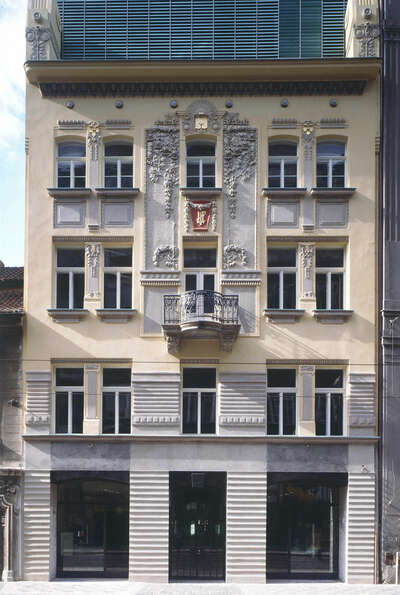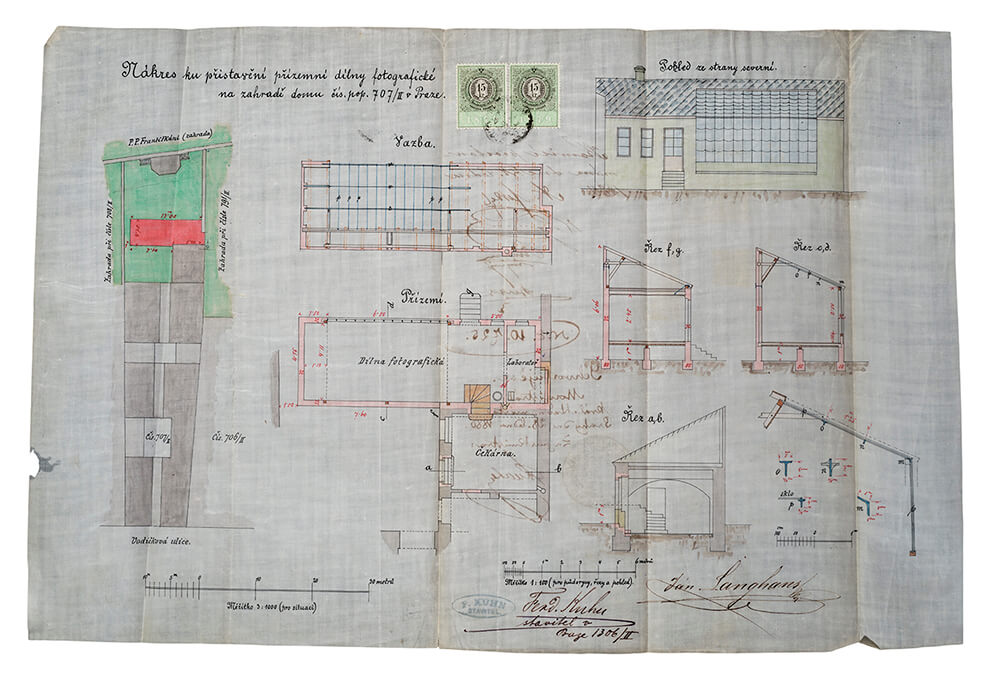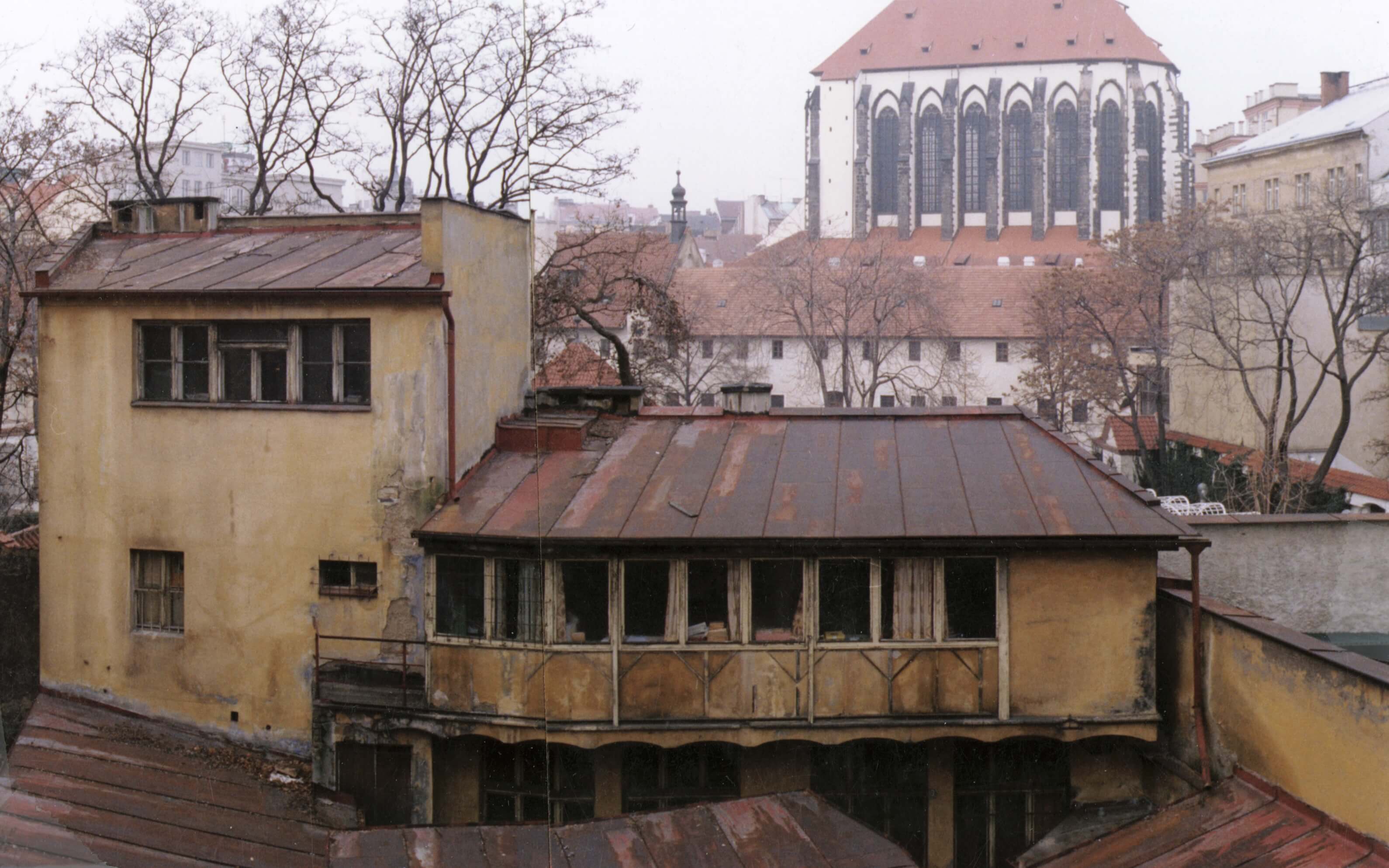History and present

In the garden of a house on Vodičkova Street in Prague, Jan Langhans built his first photographic studio in 1880. This marked the beginning not only of a photographic legacy but also of an equally fascinating architectural story.
Beginnings
The Langhans House, located on Vodičkova Street in Prague, is one of the key sites tied to the history of Czech photography. From 1880 until the nationalisation in 1948, three generations of Langhans–Meisner photographers worked here. Over the course of seventy years, tens of thousands of people sat in front of the camera lenses here, including many of the most notable figures of the time. Today, the Langhans House is once again a symbol of cultural heritage and a vibrant space for new generations of visitors.

Historical Significance
At the height of its fame, Langhans House was one of the leading photographic studios not only in Bohemia but in all of Europe. In addition to the famous photographic studio, the Gallery of Eminent Persons was established here, archiving thousands of portraits of prominent figures from across the social spectrum.
Langhans Ateliér became a cultural centre and a meeting point for personalities from various fields. It remained active until its nationalisation in 1948. The operation was taken over by the state-run cooperative Fotografia, and the building itself began to fall into disrepair. The 1991 restitution opened the way for its renovation. Despite the challenges, the historical significance of the site was revived, and the location on Vodičkova Street is once again an important point on Prague’s cultural map.
After 1948
Following the communist coup in 1948, the Langhans Ateliér was nationalised. Nearly two million glass negatives were destroyed and taken to a landfill. The last owner, Viktor Meisner (1910–1991), was denied access to the studio, which was taken over by a state enterprise. This marked the beginning of a long period of decline and devastation for the building, and the proud legacy of the Langhans name was gradually forgotten.

Restitution
After 1989, the house was returned to the descendants of Jan Langhans through restitution. In 2001–2002, it underwent a major renovation led by architect Ladislav Lábus, who sensitively restored the original structure and adapted it to modern needs. The architecture of the house became a perfect fusion of historical and contemporary elements. This reconstruction received several prestigious awards, including the Grand Prix of the Society of Architects and the Building of the Year 2003 title.
Present Day
Today, the Langhans House serves as a modern commercial and cultural space: it houses and manages the Langhans Archive collection. The building thus maintains its strong connection to the world of photography, even though the exhibition space is no longer used for photographic shows. Langhans is now open to the general public. In addition to the commercial space of FotoŠkoda, visitors can explore the historical context and atmosphere of this legendary place and enjoy coffee in the courtyard café operated by the NGO People in Need.